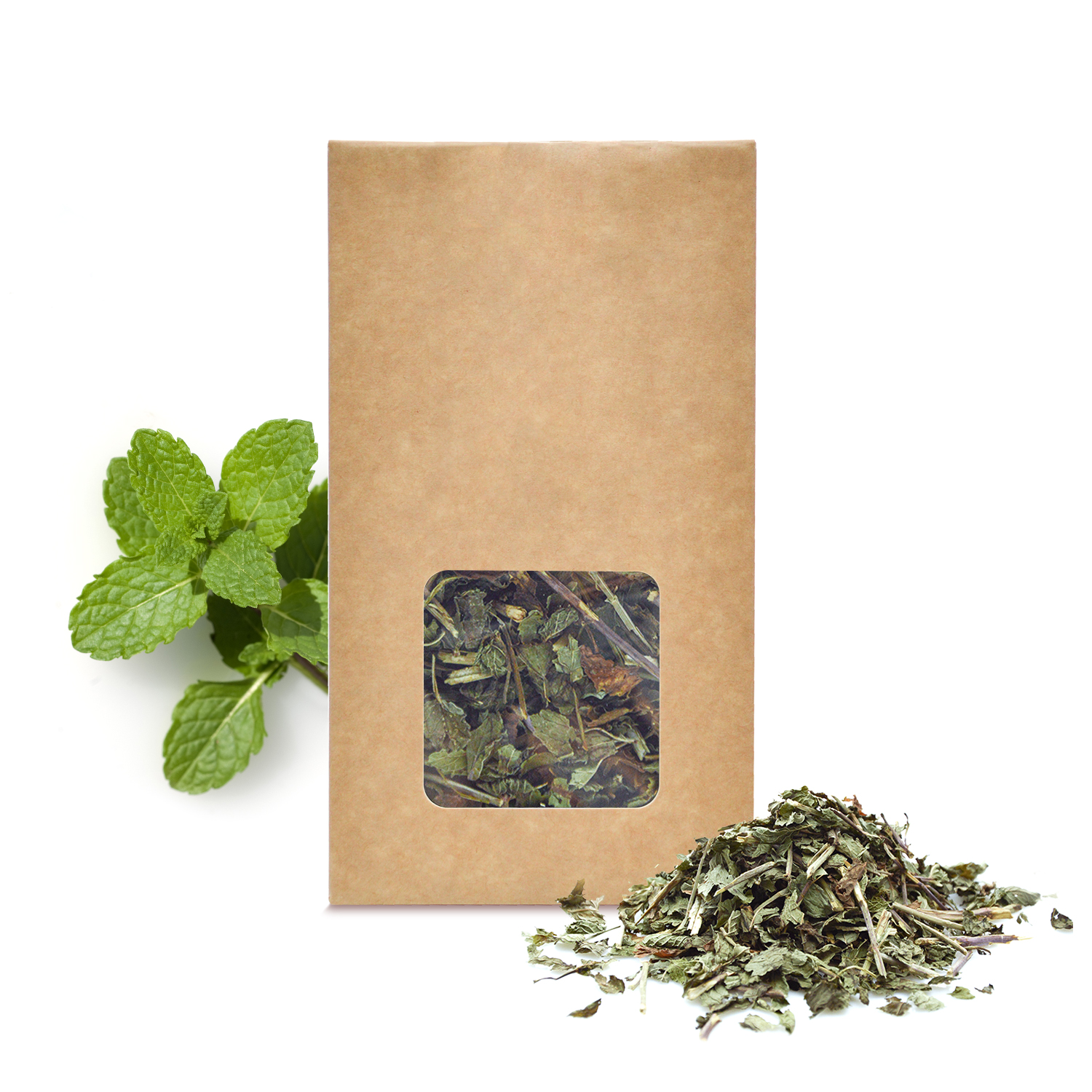
Sweet Mint, also called Green Mint, has an action on the digestive system. In particular, it will help improve difficult digestion and dyspepsia. It also intervenes in the ENT sphere, in cases of colds, coughs or bronchitis. Latin name: Mentha spicata L. Plant part: leaves.
This article was updated on 08/02/2023In case of Bad breath, Oral hygiene
Recommended modes of use
In infusion
Pour 1 tablespoon of dry leaves, or approximately 1.5 to 3 g of dry leaves, into 1/4 L of hot water. Leave to infuse for 10 minutes. Drink 2 to 3 times a day.
Gargling
Pour 1 tablespoon of dry leaves, or approximately 1.5 to 3 g of dry leaves, into 1/4 L of hot water. Leave to infuse for 10 minutes. Filter and leave to cool, then use the preparation as a gargle.
Plants often associated
In case of Dyspepsia, Colic, Colitis, Difficult digestion, Digestive disorders
Recommended modes of use
In infusion
Pour 1 tablespoon of dry leaves, or approximately 1.5 to 3 g of dry leaves, into 1/4 L of hot water. Leave to infuse for 10 minutes. Drink 2 to 3 times a day.
Plants often associated
In case of Wound
Recommended modes of use
In compress
Pour 1 tablespoon of dry leaves, or approximately 1.5 to 3 g of dry leaves, into 1/4 L of hot water. Leave to infuse for 10 minutes. Filter and let cool. Soak a compress or cloth with the preparation then apply to the area to relieve.
In case of' Aerophagia, bloating, flatulence
Recommended modes of use
In infusion
Pour 1 tablespoon of dry leaves, or approximately 1.5 to 3 g of dry leaves, into 1/4 L of hot water. Leave to infuse for 10 minutes. Drink 2 to 3 times a day.
Plants often associated
In case of Bronchitis, colds, cough
Recommended modes of use
In infusion
Pour 1 tablespoon of dry leaves, or approximately 1.5 to 3 g of dry leaves, into 1/4 L of hot water. Leave to infuse for 10 minutes. Drink 2 to 3 times a day.
Plants often associated
In case of Nervousness, Anxiety
Recommended modes of use
In infusion
Pour 1 tablespoon of dry leaves, or approximately 1.5 to 3 g of dry leaves, into 1/4 L of hot water. Leave to infuse for 10 minutes. Drink 2 to 3 times a day.
Plants often associated
In case of Sleep problems, Insomnia
Recommended modes of use
In infusion
Pour 1 tablespoon of dry leaves, or approximately 1.5 to 3 g of dry leaves, into 1/4 L of hot water. Leave to infuse for 10 minutes. Drink 2 to 3 times a day.
Plants often associated
Properties and active components
Properties
- eupeptic
- carminative
- antispasmodic (carvone, flavonoids)
- sedative (carvone)
- choleretic (carvone, flavonoids)
- cholagogue (carvone, flavonoids)
Active components
- Essential oils: menthol, menthone, carvone
- Polyphenols
- Rosmarinic acid
- Flavonoids
Precautions for use
- The use of Sweet Mint is not recommended when taking homeopathic treatment, in cases of gallstones or liver problems.
- Seek medical advice in the event of drug treatment.
- Do not use in epileptic children.
Botanical
From the family of Lamiaceae, Sweet Mint is a perennial plant measuring 80 cm high. Its quadrangular, branched stem, purplish-red in color, bears oval leaves of a beautiful fresh green, almost glabrous, opposite and serrated. They release a sweet and pronounced scent, softer than that of Peppermint.
The flowers, arranged in long terminal spikes and grouped in whorls, are colored pink, mauve à whitish. The plant reproduces by stolons, a type of stem that takes root. It is the Mint most used to make delicious Mint teas!
The ideal climate for growing Mints is one mild climate. As a result, Sweet Mint is found on siliceous and rich soils, at altitude, on the banks of streams or even in meadows. The main producers of Sweet Mint are UNITED STATES, which provide 90% of world production, then China, Russia and India.
Was this article helpful to you?
Average grade: 4.7 ( 38 votes)
Bibliography
Publication: Sharathchandra, J.N.N., Kalpana, P., & Srinivasan, K. (1995). Digestive enzymes of rat pancreas and small intestine in response to orally administered mint (Mentha spicata) leaf and garlic (Allium sativum) oil. Indian J Pharmacol, 27, 156-60.
Publication: Souza, FVM, da Rocha, MB, de Souza, DP, & Marçal, RM (2013). (−)-Carvone: Antispasmodic effect and mode of action. Fitoterapia, 85, 20-24. https://doi.org/10.1016/j.fitote.2012.10.012
Publication: McKay, D.L., & Blumberg, J.B. (2006). A review of the bioactivity and potential health benefits of peppermint tea (Mentha piperita L.). Phytotherapy Research, 20(8), 619-633. https://doi.org/10.1002/ptr.1936
Publication: Caro, DC, Rivera, DE, Ocampo, Y., Franco, LA, & Salas, RD (2018). Pharmacological Evaluation of Mentha spicata L. and Plantago major L., Medicinal Plants Used to Treat Anxiety and Insomnia in Colombian Caribbean Coast. Evidence-Based Complementary and Alternative Medicine, 2018, 1-7. https://doi.org/10.1155/2018/5921514
Work : Fleurentin, J., Pelt, JM, & Hayon, JC (2016). Good use of healing plants. Rennes, France: Ouest-France.
Work : Fournier, PV, & Boisvert, C. (2010). Dictionary of medicinal and poisonous plants of France. Paris, France: Presses de la Cité.
Work : Lieutaghi, P. (1996). The Book of Good Herbs. Arles, France: Actes Sud.
Work : Dubray, M. (2010). Guide to contraindications of the main medicinal plants. La Geneytouse, France: L. Souny.
Work : Luu, C., & Pelt, J.M. (2016). 250 natural remedies to do yourself. Mens, France: Living Earth.
Work : Corjon, G. (2018). Heal yourself with plants. Quitin, France: Jean-Paul Gisserot.
Website : Info, TA (2017, April 8). Package of Practices for Cultivation of Mentha. agriinfo.in. https://agriinfo.in/package-of-practices-for-cultivation-of-mentha-1385/
Website : Mint Morocco Base Study FAO. (2015, August 8). vdocuments.site. https://vdocuments.site/etude-de-base-menthe-maroc-fao-55c60c9b1b36f.html


